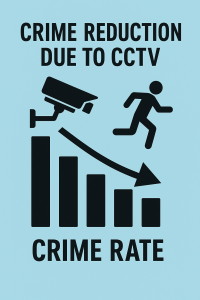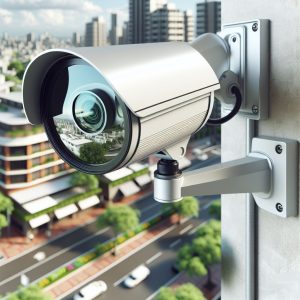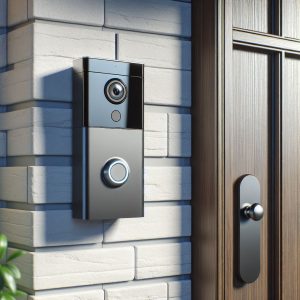Closed-circuit television (CCTV) is a powerful tool for monitoring and securing homes, businesses, and public spaces. While most people recognize cameras mounted on walls or ceilings, far fewer know what happens behind the scenes. This guide explains, in clear terms, how CCTV works, the technology involved, the types of systems available, and tips for choosing the right setup.
Whether you’re a homeowner considering a security upgrade, a small-business owner wanting to reduce theft, or just curious about surveillance technology, this beginner-friendly guide will help you understand CCTV from top to bottom.
Table of Contents
- What Is CCTV?
- Core Components of a CCTV System
- How CCTV Cameras Capture Images
- Transmission of Video Signals
- Recording and Storage
- Viewing and Monitoring
- Types of CCTV Systems
- Key Features of Modern CCTV
- Benefits of CCTV Surveillance
- Considerations Before Buying
- Installation Basics
- Common Questions About CCTV
- Conclusion
1. What Is CCTV?
CCTV stands for Closed-Circuit Television. Unlike broadcast television, which is “open” and meant for public viewing, CCTV uses a “closed” system. The video feeds are sent to specific monitors, recorders, or storage systems, not to the public.
The primary purpose of CCTV is surveillance—monitoring people, property, or processes for safety, security, and management.
You’ll see CCTV in:
- Homes
- Retail stores
- Banks
- Offices
- Warehouses
- Public spaces (e.g., train stations)
- Roads (for traffic monitoring)
2. Core Components of a CCTV System
At its simplest, a CCTV system includes:
- Cameras: Capture video images.
- Lenses: Focus light onto the camera sensor.
- Monitors: Display live or recorded footage.
- Recorders: Store footage for later review.
- Cabling / Networks: Transmit video signals.
- Power Supplies: Provide electricity to cameras and devices.
More advanced systems may also include:
- Motion detectors
- Infrared (IR) illumination
- Remote access via smartphones
- Cloud storage
3. How CCTV Cameras Capture Images
CCTV cameras work like eyes. They collect light from a scene, focus it through a lens, and record it using a sensor.
Key steps:
- Lens: Focuses light onto the image sensor.
- Image Sensor (CCD or CMOS): Converts light into electronic signals.
- Processor: Converts raw data into usable video.
- Output: Sends video to a monitor, recorder, or network.
Modern cameras may also have:
- Digital zoom
- Autofocus
- Low-light or infrared modes
- Wide Dynamic Range (WDR)
4. Transmission of Video Signals
After the camera captures video, it needs to send it somewhere.
Two main methods:
- Analog Transmission
- Uses coaxial cables (e.g., RG59)
- Video signal is analog
- Common in older systems (e.g., CVBS, HD-CVI, HD-TVI)
- Digital / IP Transmission
- Uses network cables (Ethernet) or Wi-Fi
- Video is digital data
- Can use existing computer networks
Hybrid systems can combine both analog and IP cameras.
5. Recording and Storage
Captured footage is typically saved for future review.
Types of Recorders:
- DVR (Digital Video Recorder):
- Used with analog cameras
- Converts analog signal to digital
- Stores on hard drives
- NVR (Network Video Recorder):
- Used with IP cameras
- Records already-digital video streams
- Often easier to scale and manage
Storage Options:
- Local hard drives
- Network Attached Storage (NAS)
- SD cards in cameras
- Cloud-based storage services
Modern recorders support motion-triggered recording, scheduled recording, and overwrite functions to maximize storage.
6. Viewing and Monitoring
Video can be watched:
- Live: On dedicated monitors or apps
- Playback: Reviewing stored footage
- Remote Access: Via smartphones, tablets, or PCs
Advanced systems allow multi-channel viewing, zooming in on details, or even controlling cameras (PTZ).
7. Types of CCTV Systems
There are many types of CCTV setups, each with pros and cons.
A. Analog CCTV
- Traditional, cheaper
- Lower resolution
- Uses coaxial cables
- Easy to install in existing analog setups
B. HD Analog (HD-CVI, HD-TVI, AHD)
- Higher resolution (up to 4K)
- Still uses coaxial
- Affordable upgrade for old systems
C. IP CCTV
- Digital signal
- High resolution (often 4K+)
- Easier remote access
- Can use Wi-Fi or Ethernet
- Supports PoE (Power over Ethernet)
D. Wireless CCTV
- Wi-Fi-based
- Easier installation
- Potential signal interference
- Needs power source
E. PTZ (Pan-Tilt-Zoom) Cameras
- Can move and zoom remotely
- Ideal for large areas
F. Hidden/Covert Cameras
- Disguised for discreet monitoring
G. Thermal and Infrared Cameras
- Work in total darkness
- Detect heat signatures
8. Key Features of Modern CCTV
Today’s CCTV systems offer many advanced features:
- High Resolution (HD/4K): Clearer details
- Infrared Night Vision: Monitoring in darkness
- Motion Detection: Saves storage, triggers alerts
- Remote Viewing: Access via smartphone
- Two-Way Audio: Talk/listen via cameras
- AI and Analytics:
- Face recognition
- License plate recognition
- Object detection
- Cloud Storage: Off-site backup
- Smart Alerts: Notifications on motion or tampering
9. Benefits of CCTV Surveillance
- Crime Deterrence: Visible cameras discourage theft and vandalism.
- Evidence Collection: Useful for police investigations.
- Remote Monitoring: Watch your property anywhere.
- Employee Safety: Reduces workplace accidents, improves accountability.
- Operational Monitoring: Track workflows, customer patterns.
- Reduced Insurance Costs: Some insurers offer discounts for security systems.
10. Considerations Before Buying
Before purchasing a CCTV system, think about:
- Purpose: Theft prevention? Monitoring staff? Traffic control?
- Coverage Area: Indoors? Outdoors? Large parking lot?
- Lighting Conditions: Do you need night vision?
- Resolution: HD? 4K?
- Storage Needs: How many days of recording?
- Connectivity: Wired? Wireless? Hybrid?
- Budget: Entry-level kits or enterprise-grade solutions?
- Compliance: Follow local privacy and surveillance laws.
11. Installation Basics
DIY vs. Professional
- DIY kits: Great for homes, small shops.
- Easier to install.
- Cheaper upfront.
- Professional installation: Best for complex setups.
- Custom planning.
- Neater cable runs.
- Maintenance packages.
Steps in Installation
- Site Survey: Determine camera locations for best coverage.
- Mount Cameras: Secure to walls or ceilings.
- Run Cables/Connect Power: Ethernet or coaxial.
- Connect to Recorder: DVR or NVR.
- Configure Settings: Resolution, motion zones, alerts.
- Test System: Ensure proper coverage and recording.
12. Common Questions About CCTV
Q1: Do CCTV cameras record all the time?
Depends on the settings. Many systems offer:
- Continuous recording
- Motion-triggered recording
- Scheduled recording
Q2: Can I view my cameras remotely?
Yes, most modern systems allow viewing via smartphone apps or web browsers.
Q3: Are wireless cameras truly wireless?
They can transmit video wirelessly, but most still need power (battery or AC).
Q4: How long is footage stored?
Varies based on hard drive size, recording quality, and settings. Typically from a few days to several weeks.
Q5: Is CCTV legal everywhere?
You need to comply with local privacy laws. In many places, you must inform people they are being recorded.
13. Conclusion
CCTV is a versatile and effective technology for improving security, monitoring activity, and deterring crime. While the basics—cameras, recorders, and monitors—remain the same, modern systems have become smarter, clearer, and easier to use.
Understanding how CCTV works helps you make better decisions about what system suits your needs. Whether you want a simple two-camera setup for your home or a large, multi-site network of IP cameras with AI analytics, the key is knowing the basics—like you do now.
Secure Your Home and Business with Garrison Alarms!
Experience unmatched safety with Garrison Alarms – your trusted partner in cutting-edge home and business security solutions. With over 35 years of experience, we offer expert installation, state-of-the-art technology, and personalized security strategies tailored to your unique needs.
Our Services Include:
- Home & Business Alarms: Maximize security with our advanced wired and wireless alarm systems.
- CCTV Systems: Protect your property with high-resolution, 4K HD, and color night vision cameras.
- Access Control: Secure your premises with keypad entry, biometric solutions, and more.
- Alarm Monitoring: 24/7 monitoring to ensure your safety and peace of mind.
Why Choose Garrison Alarms?
- Expert & Professional Service: Our licensed technicians provide top-notch installation and support.
- Customer Satisfaction: We prioritize your security and satisfaction with a focus on quality and reliability.
- Affordable Pricing: Get the best security solutions at competitive prices.
Get a FREE Quote Today! Visit Garrison Alarms or call us at 09 520 4875 to learn more and secure your property today!
Garrison Alarms – Your Safety, Our Priority




